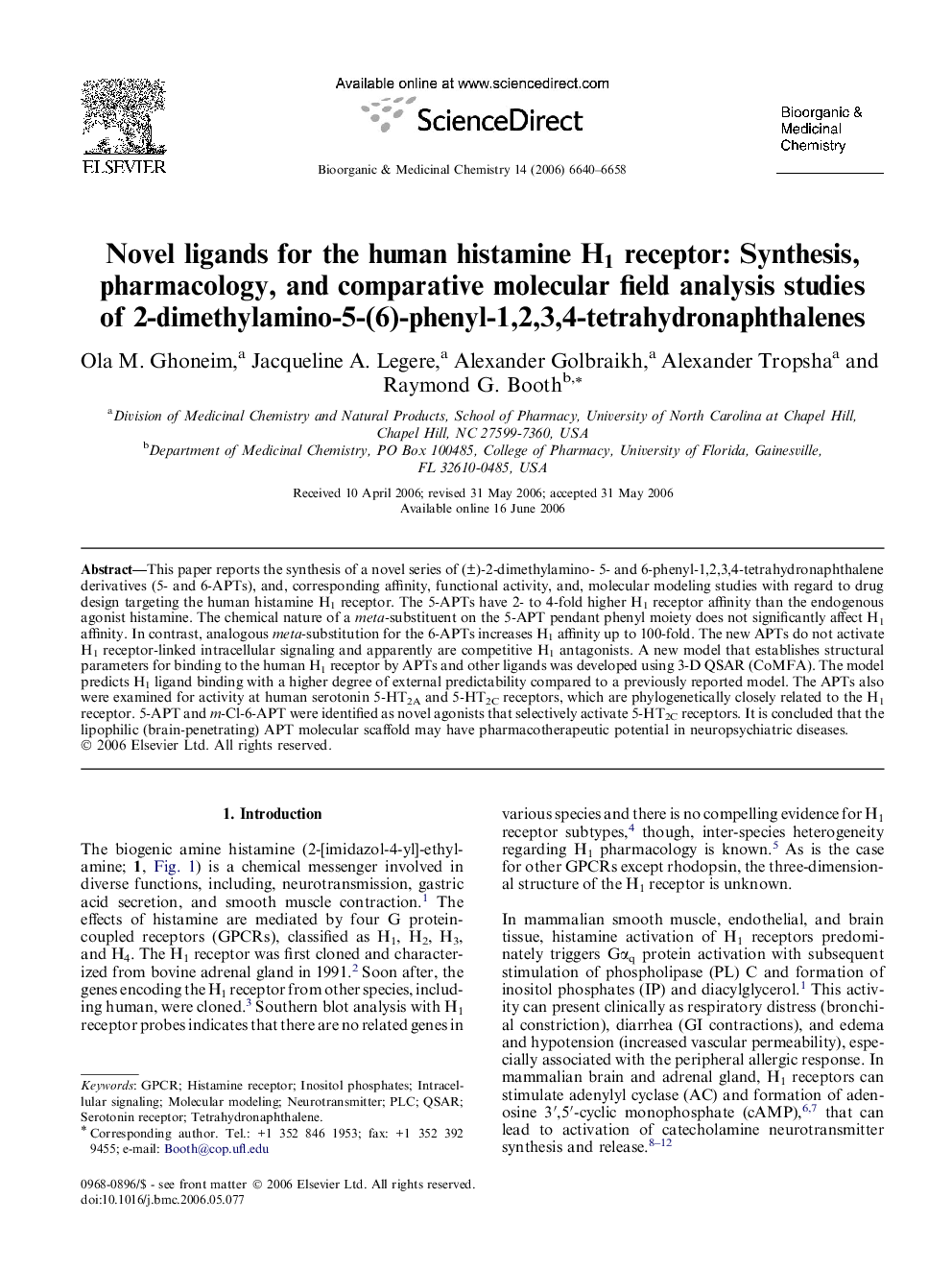| کد مقاله | کد نشریه | سال انتشار | مقاله انگلیسی | نسخه تمام متن |
|---|---|---|---|---|
| 1364312 | 981534 | 2006 | 19 صفحه PDF | دانلود رایگان |

This paper reports the synthesis of a novel series of (±)-2-dimethylamino- 5- and 6-phenyl-1,2,3,4-tetrahydronaphthalene derivatives (5- and 6-APTs), and, corresponding affinity, functional activity, and, molecular modeling studies with regard to drug design targeting the human histamine H1 receptor. The 5-APTs have 2- to 4-fold higher H1 receptor affinity than the endogenous agonist histamine. The chemical nature of a meta-substituent on the 5-APT pendant phenyl moiety does not significantly affect H1 affinity. In contrast, analogous meta-substitution for the 6-APTs increases H1 affinity up to 100-fold. The new APTs do not activate H1 receptor-linked intracellular signaling and apparently are competitive H1 antagonists. A new model that establishes structural parameters for binding to the human H1 receptor by APTs and other ligands was developed using 3-D QSAR (CoMFA). The model predicts H1 ligand binding with a higher degree of external predictability compared to a previously reported model. The APTs also were examined for activity at human serotonin 5-HT2A and 5-HT2C receptors, which are phylogenetically closely related to the H1 receptor. 5-APT and m-Cl-6-APT were identified as novel agonists that selectively activate 5-HT2C receptors. It is concluded that the lipophilic (brain-penetrating) APT molecular scaffold may have pharmacotherapeutic potential in neuropsychiatric diseases.
Figure optionsDownload as PowerPoint slide
Journal: Bioorganic & Medicinal Chemistry - Volume 14, Issue 19, 1 October 2006, Pages 6640–6658